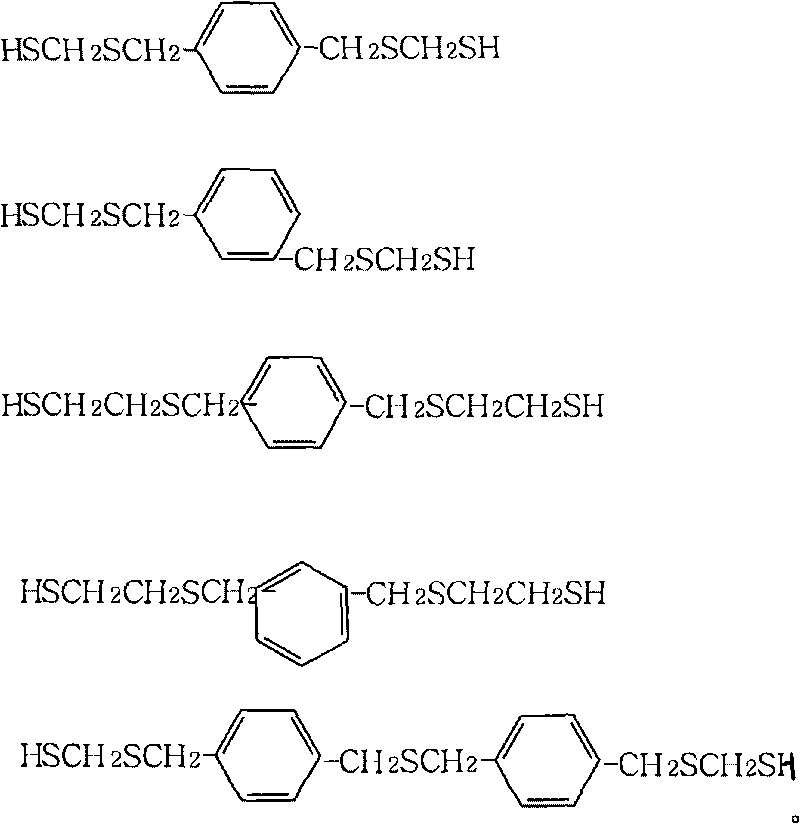Resin lens with high impact resistance
A resin lens, high impact resistance technology, used in optics, instruments, optical components, etc., can solve the problems of low impact resistance, low Abbe number, poor impact strength, etc., to achieve improved impact resistance, high refraction rate effect
- Summary
- Abstract
- Description
- Claims
- Application Information
AI Technical Summary
Problems solved by technology
Method used
Image
Examples
example 1
[0026] Example 1, drop into isophorone diisocyanate 55.7g (0.25mol) and dibutyl tin dichloride 0.2g in a 250ml four-neck flask equipped with a thermometer, condenser, nitrogen inlet and stirrer, under nitrogen protection Heating to 50°C; adding 96.2g (0.5mol) of dimercaptomethylthioethane dropwise for 1 hour, and then aging at 60°C for 2 hours to obtain 152.1g of mercapto-terminated polythiourethanes The solution of the prepolymer; its refractive index n D 25 1.5753, viscosity η 25 80CP.
example 2
[0027] Example 2, drop into 55.7g (0.25mol) of isophorone diisocyanate (0.25mol) and 0.25g of dibutyl tin dichloride in a 250ml four-necked flask equipped with a thermometer, condenser, nitrogen inlet and stirrer, under nitrogen protection Heating to 50°C; adding 50.1 g (0.4 mol) of dimercaptoethylthiomethane dropwise for 1 hour, and then aging at 60°C for 2 hours to obtain 106.05 g of mercapto-terminated polythiourethane precursors Polymer solution; its refractive index n D 25 1.5690, viscosity η 25 55CP.
example 3
[0028] Example 3, 222.3g (1.0mol) of isophorone diisocyanate (IPDI) and 209.8g (0.8mol) of dicyclohexylmethane diisocyanate were fully stirred for 1 hour under nitrogen protection to obtain 432.1g of polyisocyanate-containing compounds The solution.
PUM
| Property | Measurement | Unit |
|---|---|---|
| refractive index | aaaaa | aaaaa |
| refractive index | aaaaa | aaaaa |
| refractive index | aaaaa | aaaaa |
Abstract
Description
Claims
Application Information
 Login to View More
Login to View More - R&D Engineer
- R&D Manager
- IP Professional
- Industry Leading Data Capabilities
- Powerful AI technology
- Patent DNA Extraction
Browse by: Latest US Patents, China's latest patents, Technical Efficacy Thesaurus, Application Domain, Technology Topic, Popular Technical Reports.
© 2024 PatSnap. All rights reserved.Legal|Privacy policy|Modern Slavery Act Transparency Statement|Sitemap|About US| Contact US: help@patsnap.com








